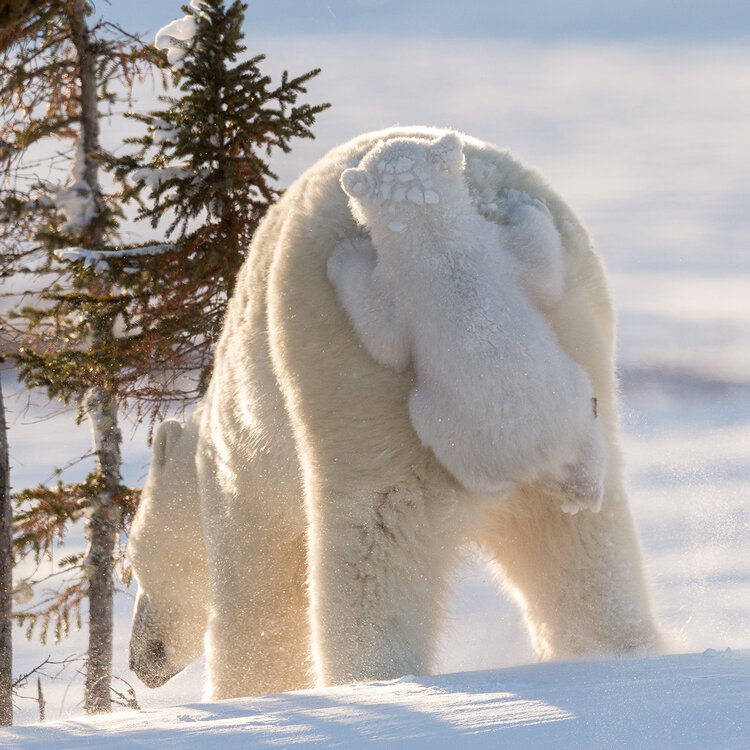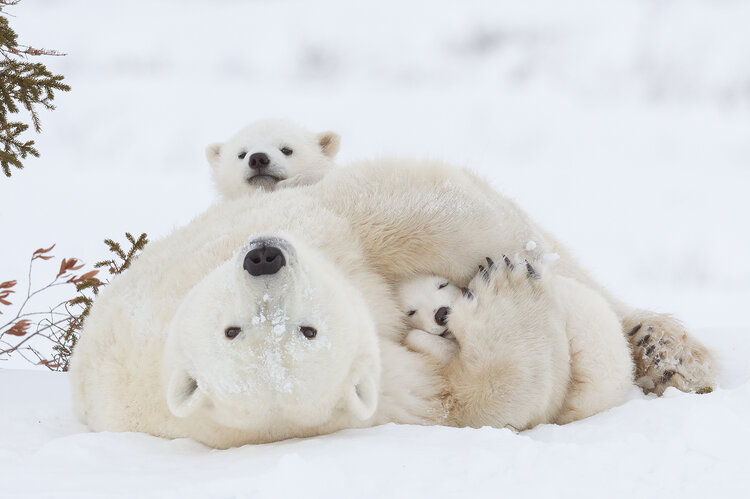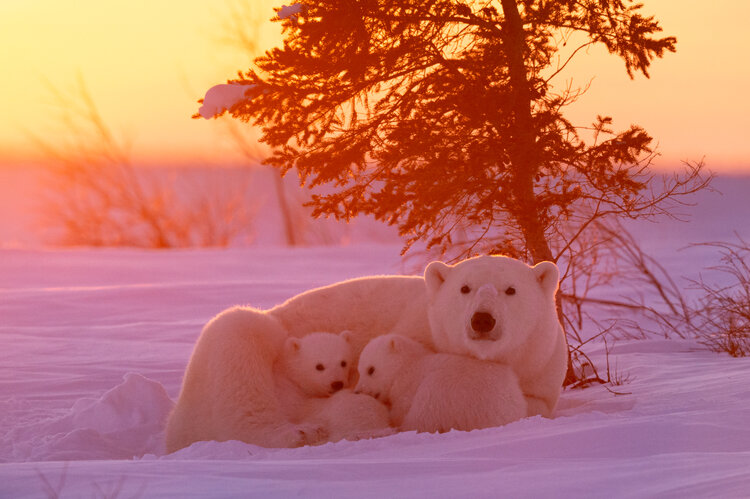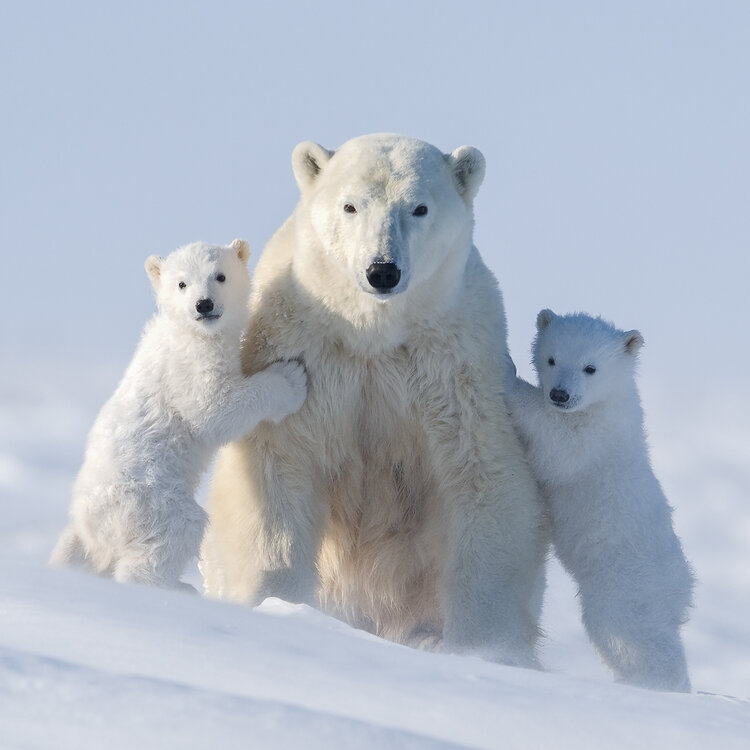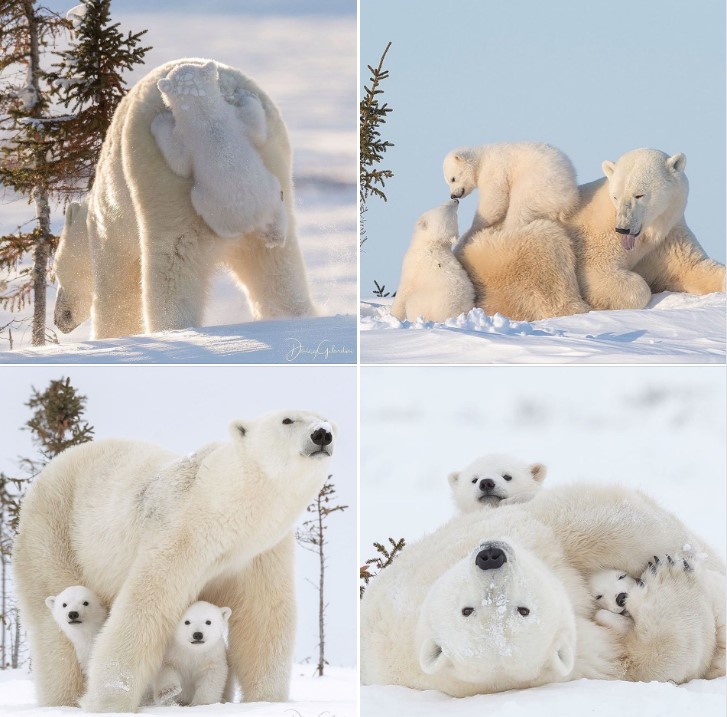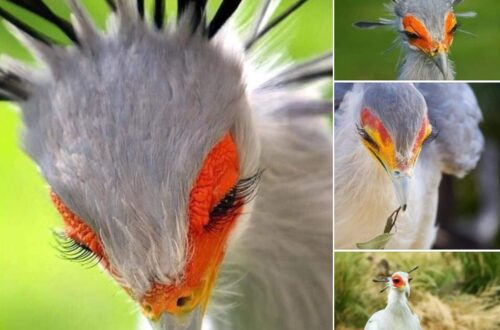Wapusk National Park is one of the most remote in all of Canada and is home to many polar bears, a species that has roamed the park’s ice fields since before European explorers first set foot on the continent. The park’s name comes from the Inuktitut word meaning “weed-covered land,” referring to the sparse plants that grow in the park’s tundra landscapes. Wapusk has a rich history as being home for Inuit and First Nations groups for thousands of years, and there are still several communities nearby where you can take tours or classes to learn more about those cultures.
What makes Wapusk National Park special for most visitors is that it’s home to one of the world’s largest known polar bear maternity denning areas. Those are areas where pregnant female polar bears come during the summer (after the sea ice has broken up and it’s too hard to hunt for seals). They then stay to give birth to their cubs, usually around November or December. Females will fast and use their fat reserves to survive inland until February or March, when they make their way back to the sea ice to hunt.
According to Parks Canada, at birth, a polar bear cub is no bigger than one of its mother’s paws, and weigh between one to 1.5 pounds. Adult male polar bears weigh between 661 to 992 pounds, and females weigh between 331 to 551 pounds. While they’re cute as can be, they’re also extremely deadly, and you’ll want to read up on safety in polar bear country if you’re planning to visit.
![]() Daisy Gilardini
Daisy Gilardini
